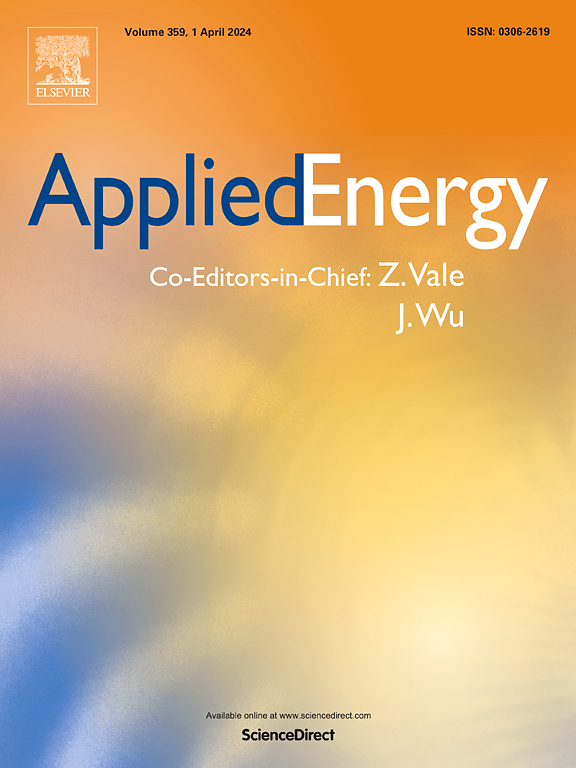质子传导固体氧化物电解电池通过H2O电解和H2O - co2共电解生产可再生燃料的性能和稳定性
IF 11
1区 工程技术
Q1 ENERGY & FUELS
引用次数: 0
摘要
利用固体氧化物电解电池(soec)通过H2O电解或H2O - co2共电解生产商品化学品,为利用过剩的可再生能源解决难以脱碳的工业部门提供了一种方法。最近,质子导电SOEC (ppcc)由于其具有较低的工作温度和与其他化学过程灵活耦合的独特特性,在此类应用中成为一种有前途的SOEC类型。然而,ppcc的法拉第效率(FE),即实验产生的H2与理论可以产生的H2的比率,低于100%,其稳定性,特别是在共电解操作下,还有待验证。本文系统地研究了不同操作条件下的FE变化以及PCECs在H2O电解和H2O - co2共电解中的稳定性。结果表明,操作参数对表观有限元有显著影响。在短期稳定性测试中,H2O - co2共电解模式的运行特性远不如H2O电解或H2-CO2热化学转化,负极(ni基燃料电极)的FE和催化活性都在逐渐下降。确定了优化操作参数的机会,以最大限度地提高效率并减少退化。本文章由计算机程序翻译,如有差异,请以英文原文为准。
Performance and stability of renewable fuel production via H2O electrolysis and H2O–CO2 co-electrolysis using proton-conducting solid oxide electrolysis cells
Electrochemical production of commodity chemicals via H2O electrolysis or H2O–CO2 co-electrolysis using solid oxide electrolysis cells (SOECs) offers a way to utilize excess renewables to address hard-to-decarbonize industrial sectors. Recently, proton-conducting SOECs (PCECs) have emerged as a promising type of SOEC in such applications, due to their unique properties of lower operating temperatures and flexible coupling with other chemical processes. However, the Faradaic efficiency (FE), i.e., the ratio of the experimentally produced H2 to that which could be theoretically generated, of PCECs is less than 100 % and their stability, particularly under co-electrolysis operation, has yet to be verified. In this work, a systematic investigation of the variation of FE under different operating conditions and the stability of PCECs in both H2O electrolysis and H2O–CO2 co-electrolysis is conducted. It is shown that the operating parameters have a significant effect on the apparent FE. During short-term stability testing, H2O–CO2 co-electrolysis mode presents much less favorable operating characteristics than H2O electrolysis or H2–CO2 thermochemical conversion, with both FE and the catalytic activity of the negatrode (Ni-based fuel electrode) degrading gradually. Opportunities are identified to optimize operating parameters to maximize effectiveness and minimize degradation.
求助全文
通过发布文献求助,成功后即可免费获取论文全文。
去求助
来源期刊

Applied Energy
工程技术-工程:化工
CiteScore
21.20
自引率
10.70%
发文量
1830
审稿时长
41 days
期刊介绍:
Applied Energy serves as a platform for sharing innovations, research, development, and demonstrations in energy conversion, conservation, and sustainable energy systems. The journal covers topics such as optimal energy resource use, environmental pollutant mitigation, and energy process analysis. It welcomes original papers, review articles, technical notes, and letters to the editor. Authors are encouraged to submit manuscripts that bridge the gap between research, development, and implementation. The journal addresses a wide spectrum of topics, including fossil and renewable energy technologies, energy economics, and environmental impacts. Applied Energy also explores modeling and forecasting, conservation strategies, and the social and economic implications of energy policies, including climate change mitigation. It is complemented by the open-access journal Advances in Applied Energy.
 求助内容:
求助内容: 应助结果提醒方式:
应助结果提醒方式:


